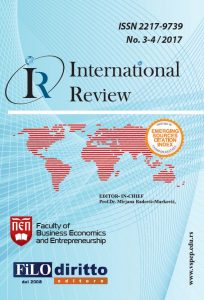Emission of carbon dioxide of selected retailers
Emission of carbon dioxide of selected retailers
Author(s): Radojko LukićSubject(s): Physical Geopgraphy, Evaluation research, Demography and human biology
Published by: Visoka škola za poslovnu ekonomiju i preduzetništvo
Keywords: greenhouse gas emissions; carbon dioxide; CO2 emission sources; renewable energy sources; sustainable reporting
Summary/Abstract: Increased attention has been paid recently to the analysis of the effects of applying the concept of sustainable development in retail. In that context we have particularly considered greenhouse gases emission in retail. This is achieved through the use of modern ecological technology in business - through the whole value chain. The ultimate goal is to achieve the planned reductions of carbon dioxide in retail, which positively reflects the overall performance of retailers, environmental in particular. The costs of carbon dioxide emission reduction affect the performance of retailers. Continuous empirical research shows that almost all global retailers achieve a significant reduction in carbon dioxide emissions from year to year. Empirical research conducted in this paper on the example of global retailers in the United States, Europe and the European Union, the United Kingdom, Mexico, China, Croatia and Serbia shows significant and planned reduction of carbon dioxide emissions in retail, especially in countries with developed market economies. This empirical research is mainly based on the analysis of the original sustainable (environmental and ecological) reports officially disclosed by selected retailers, primarily from the countries of a developed market economies, which they started to publish with regular annual financial statements. They are now an integral part of the so-called integrated reporting on performance of global retailers. Due to the general importance, harmonized regulations on sustainable retail reporting are being increasingly applied as a data source for more efficient environmental management. In perspective, this will ease the comparative analysis of the carbon dioxide emission of global and other retailers.
Journal: International Review
- Issue Year: 2017
- Issue No: 3-4
- Page Range: 72-87
- Page Count: 16
- Language: English

